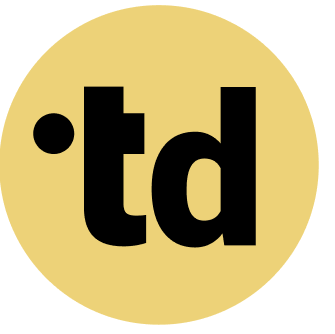Key Takeaways
In the near future, AI will be the backbone of every team, requiring a fundamental shift in organizational structures away from traditional hierarchies.
Successful hybrid human-AI teams depend on clear role definitions, where AI handles repetitive tasks and humans focus on strategic, high-value work.
Effective change management, including upskilling and transparent communication, is essential to address employee concerns and ensure successful AI integration.
Overload is the silent tax on team productivity, with 63 percent of European workers expecting parts of their jobs to be automated soon. This isn't a threat; it's the starting pistol for a race towards smarter work. Team Architects-the leaders actively shaping modern organizations-are the heroes of this story. They see the challenge not as a technology problem, but one of organizational development. The effective tool for this quest is teamdecoder, designed to bring clarity and flow to the complex task of building hybrid teams (humans and AI agents) where humans and AI achieve more, together.
Practical Framework for Team Architects
As a Team Architect, you can apply these principles to your organization:
- Map Current State: Document existing roles and responsibilities using a tool like teamdecoder.
- Identify Gaps: Where are roles unclear? Where do humans and AI agents overlap?
- Define Clear Boundaries: Specify which tasks are handled by humans vs. AI agents.
- Create Accountability: Assign clear decision rights for each role.
- Iterate and Improve: Continuously refine based on team feedback.
Exit the Matrix: Why Old Structures Are Failing
Traditional hierarchies are cracking under the pressure of modern work. Two-thirds of enterprises now agree they must restructure their teams to enable human-AI collaboration.
This pressure is reflected in output, with the average European worker producing only 76 percent as much as their US counterparts.
The old model of static roles and top-down communication cannot keep pace with the EU enterprises now leveraging AI.
This isn't just a technology shift; it's a fundamental change in organizational design.
Navigating this transformation requires a new playbook for defining how work gets done.
Sweet Teams Are Made of This: AI-Powered Role Design
Clarity is the first casualty of complexity, but AI restores order. By 2030, automation could absorb nearly one-third of all working hours in Europe.
This shift allows for a radical redefinition of roles and responsibilities. AI agents can manage data analysis, scheduling, and reporting, freeing up human talent for high-value strategic tasks.
In Germany, over 60 percent of employees already use AI at work, often informally, to gain this advantage.
AI clarifies who does what by taking over the repetitive tasks no one wants.
You can explore the different roles of AI in teams to see how this works in practice.
With clear roles defined, the next step is to build a governance model that makes this new hybrid team (humans and AI agents) click.
Your Blueprint for Hybrid Team Governance
Architect Insight: Creating a successful human-AI team structure requires a deliberate framework. Our Playful Tip: Think of it as setting the rules for a new, more powerful game.
Here is a simple four-step process to get started:
- Define the AI's Mission: Clearly document the tasks AI will handle, the data it will use, and its performance KPIs.
- Map Hybrid Workflows: Visualize the new process, showing exactly where human oversight and creativity intersect with AI automation.
- Establish Human Oversight: Designate who is accountable for the AI's output, reflecting the most Europeans who believe AI needs careful management.
- Launch a Skills Initiative: Identify skill gaps and provide training, as demand for tech skills in Europe is set to rise significantly.
This structure provides the clarity needed for designing team workflows that last.
A well-designed system produces more than just efficiency; it creates a better work environment.
Teams Just Wanna Have Fun: The Human Benefits of AI
When AI handles the monotonous work, teams have more energy for innovation. A comprehensive study in Germany found no negative effects on workers' mental health from AI adoption.
In fact, some workers reported modest physical health benefits as AI took over strenuous tasks.
This creates a positive cycle where employees feel more valued. AI handles the grunt work, so your team can finally focus on the great work.
This boost in morale and focus is a key component of seamless human-AI teamwork.
Achieving this harmony requires a thoughtful approach to the human side of this technological shift.
Make Bots and Humans Click: A Guide to Change Management
Deep Dive: The greatest hybrid team structure will fail without buy-in. Acknowledging team anxieties is the first step to a smooth transformation.
Over organizations cite resistance to change as a major barrier to AI adoption.
This is understandable, as 53 percent of European decision-makers report their employees are worried about job disruption from AI.
Our Playful Tip: Turn change into a game. Use teamdecoder's role cards to run workshops where teams design their future hybrid roles together.
This collaborative approach builds trust and turns fear into excitement. Start the free "Workforce Transformation" course to learn more techniques.
With the right training, Many people can learn to work with AI effectively.
This proactive approach to change isn't just for large corporations; it's a vital strategy for growing businesses, too.
Scaling Your Strategy from Day One
For startups and SMEs, building a scalable organization is critical. While only German businesses used AI in 2019, that number is growing fast.
New companies have a unique advantage: they can build a hybrid team from the ground up. This avoids the pain of complex restructuring later on.
Using a tool like teamdecoder, founders can define roles and responsibilities that account for future AI agent integration from day one.
You can try teamdecoder for free to map out your initial team structure. See our pricing for plans that grow with you.
This forward-thinking approach to scaling with AI assistants ensures your company is built for the future.
Try teamdecoder for free - shape your team and make change feel like play!
#TeamArchitecture #Hybrid Team #RolesandResponsibilities #FutureofWork
More Links
Microsoft presents the Work Trend Index 2025, characterizing it as the birth year of pioneer companies.
Workday reveals in a study that German executives are focusing on skills-based, people-centered talent strategies in the age of AI.
Campana & Schott explores new collaborations with AI and how teams can truly benefit.
EY presents the European AI Barometer 2025.
Stifterverband focuses on AI competencies in German companies.
Destatis offers a press release from the Federal Statistical Office.
BIBB provides information from the Federal Institute for Vocational Education and Training.
Denkfabrik BMAS discusses generative AI technology scenarios and their impact on work until 2030.
FAQ
How do I start building a hybrid team (humans and AI agents)?
Start by identifying repetitive, data-heavy tasks that are ideal for automation. Then, use a tool like teamdecoder to redefine existing roles and map out new workflows that integrate AI agents. Focus on clear communication and provide training to help your team adapt to their new responsibilities.
Will AI replace jobs on my team?
AI is more likely to augment jobs rather than replace them entirely. A McKinsey study projects that up to 30 percent of work hours could be automated, not jobs themselves. This transition allows employees to shift from tedious tasks to more strategic work that requires human creativity and critical thinking.
What skills are important for working with AI?
A German study highlighted that communication and critical thinking are the two most important skills for working with AI. Technical skills are valuable, but the ability to question AI outputs, interpret data thoughtfully, and collaborate with team members on strategy are even more critical for success.





